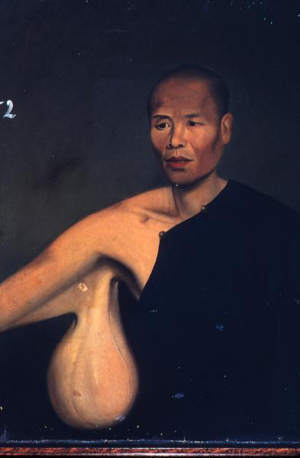Medical Imagery through the ages
A wonderful collection of medical images dating from 1830 through 1850 can be found at the Yale University School of Medicine, Peter Parker Collection (no, not
that Peter Parker)
From
their website
Peter Parker, medical missionary and diplomat to China, was born in Framingham, Massachusetts in 1804. His parents were farmers and devout followers of the orthodox Congregational faith. Parker attended Yale College, graduating in 1831, and remained in New Haven to study theology and medicine, earning his M.D. from the Medical Institution of Yale College in 1834. In January of the same year he was ordained to the Presbyterian ministry in Philadelphia, one month before departing for Canton as the first Protestant medical missionary to China. One year after his arrival, with assistance from American and British benefactors, he opened the Ophthalmic Hospital at Canton. Parker specialized in treating diseases of the eye, particularly cataracts, but also performed general surgical operations including the removal of tumors. He is probably best known for the introduction of anesthesia to China in the form of sulphuric ether.
During his first trip to China, Parker made the acquaintance of the Western trained Chinese painter, Lam Qua. In the 1820s Lam Qua had studied under the patronage of George Chinnery, the first English painter to settle in China. Lam Qua's training and the level of mastery he developed enabled him to become one of the most revered Chinese painters utilizing the Western style of portraiture. As a result of his talent, he developed a sizable clientèle from the Western community within as well as outside of Asia. The most celebrated body of work by Lam Qua is the impressive collection of portraits, commissioned by Peter Parker in the 1830's, of patients at the Canton Hospital with large tumors or other major deformities. These startling and somewhat gruesome paintings of pathological subject matter are unsettling to the viewer. One of the most noticeable aspects of each portrait is the expressionless look on the subjects' face. The lack of emotion turns the viewer's eye from the subjects' face to their pathology, or illness. Each subject appears to express neither pain nor sadness and serves as a testament to the human spirit in the face of physical adversity. Images displayed here represent only a part of the collection of Lamqua's work held by the Medical Historical Library at Yale University. The portraits are of men, women, and children of a variety of ages and at various stages in the progression of their tumors.
The
portraits themselves can be found here and here is one example:
 Posted by DaveH at September 25, 2005 3:26 PM
Posted by DaveH at September 25, 2005 3:26 PM
